SOLAR ECLIPSE, FALKLANDS, SOUTH GEORGIA & ANTARCTIC PENINSULA
__________________
__________________
This voyages takes guests to the beautiful landscapes of the Falklands-Malvinas then on to view the wildlife of South Georgia. For the grand finale the ship makes its way down to the Weddell Sea and the Antarctica Peninsula to witness the total solar eclipse.
| Day | Place | Highlights |
|---|---|---|
| 1 | Embarkation Ushuaia | Embark and sail the Beagle Channel |
| 2 | At Sea | Toward the Falklands |
| 3-4 | Falklands-Malvinas | Discovering amazing bird-watching opportunities |
| 5-6 | At Sea | Continue your journey at sea toward South Georgia |
| 7-10 | South Georgia | Experience the beauty and sheer magnitude of wildlife on South Georgia |
| 11 | At Sea | Toward the Antarctic Peninsula |
| 12 | Weddell Sea | View the Solar Eclipse |
| 13-14 | Sailing toward Antarctica | Tabular icebergs, whales, sea birds |
| 15-17 | Antarctic Peninsula | Reach and explore the southern most continent of the world |
| 18-19 | Drake Passage Crossing | Reflect on your journey whilst you cross this famous stretch of sea |
| 20 | Disembark in Ushuaia | Farewell your fellow expeditioners |
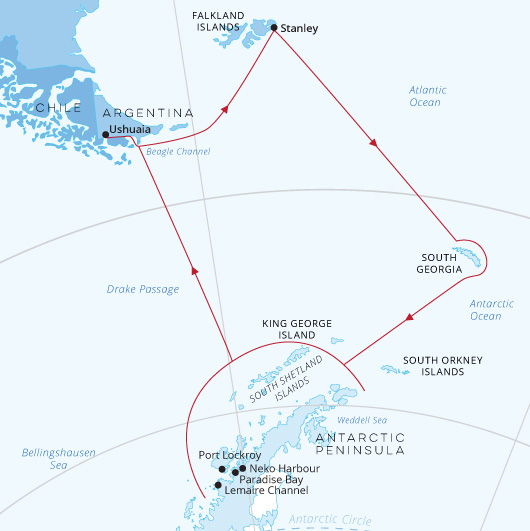
The Hondius (176 guests) takes her maiden voyage in 2019. She has an Ice class rating of 6, the most advanced to date. The Hondius will offer deluxe accommodations for a total 176 guests. One deck has been entirely reserved for lectures and presentations in one large observation lounge. The ship’s main focus remains discovery, taking advantage of wildlife opportunities and the related shore activities. Efficient zodiac embarkation is guaranteed with two separate gangways and in addition a zodiac embarkation indoor-platform which can also be used for special activities such as kayaking.
The Janssonius (170 guests) will be launched in June 2021. She has an Ice class rating of 6, the most advanced to date. The Janssonius offers deluxe accommodation for a total 170 guests. One deck has been entirely reserved for lectures and presentations in one large observation lounge. The ship’s main focus remains discovery, taking advantage of wildlife opportunities and the related shore activities. Efficient zodiac embarkation is guaranteed with two separate gangways and in addition a zodiac embarkation indoor-platform which can also be used for special activities such as kayaking.
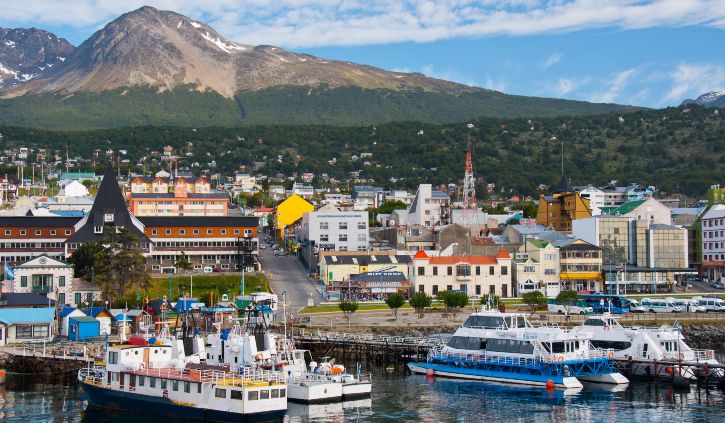
Your voyage begins in the southernmost city in South America, Ushuaia, Argentina. Starting in the afternoon, you embark from this small port town on Tierra del Fuego, nicknamed “The End of the World,” and sail the mountain-fringed Beagle Channel for the remainder of the evening.
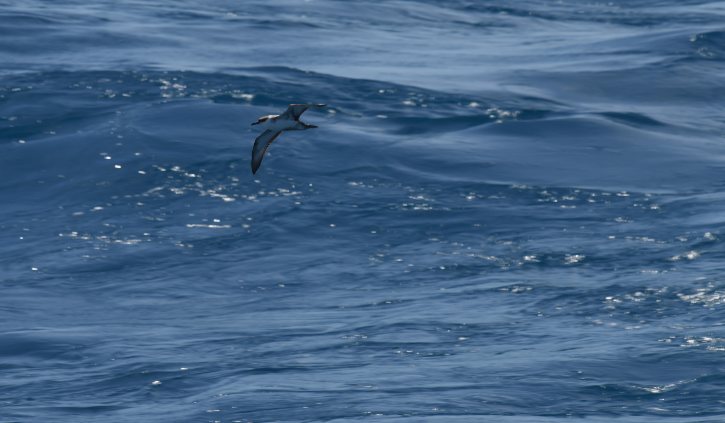
Several species of albatross follow the vessel into the westerlies, along with storm petrels, shearwaters, and diving petrels. While at sea the education program with commence with lectures on history, wildlife and geology.
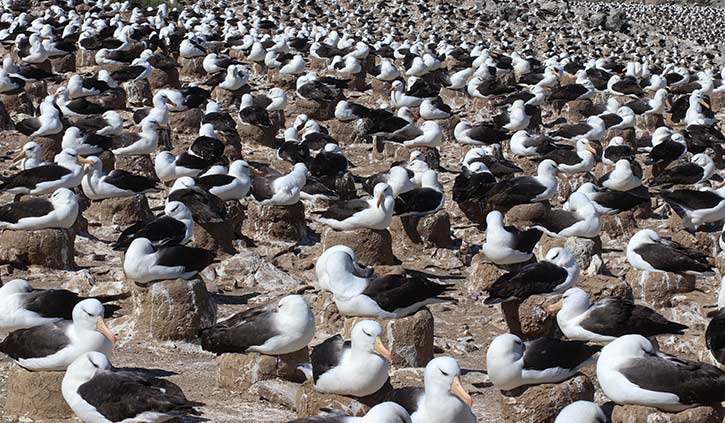
The Falkland (Malvinas) Islands offer an abundance of wildlife that is easily approachable, though caution is always advised. These islands are largely unknown gems, the site of a 1982 war between the UK and Argentina. Not only do various species of bird live here, but chances are great you’ll see both Peale’s dolphins and Commerson’s dolphins in the surrounding waters.
During this part of the voyage, you may visit the following sites:
Carcass Island – Despite its name, this island is pleasantly rodent-free and hence bounteous with birdlife. Anything from breeding Magellanic penguins and gentoos to numerous waders and passerine birds (including Cobb’s wrens and tussock-birds) live here.
Saunders Island – On Saunders Island you can see the black-browed albatross and its sometimes-clumsy landings, along with breeding imperial shags and rockhopper penguins. King penguins, Magellanic penguins, and gentoos are also found here.

The capital of the Falklands and center of its culture, Port Stanley offers a little Victorian-era charm: colorful houses, well-tended gardens, and English-style pubs are all to be found here. You can also see several century-old clipper ships nearby, silent witnesses to the hardships of 19th century sailors. The small but interesting museum is also worth a visit, covering the early days of settlement up to the Falklands War. Approximately 2,100 people live in Port Stanley. Feel free to wander at will enjoying the atmosphere.
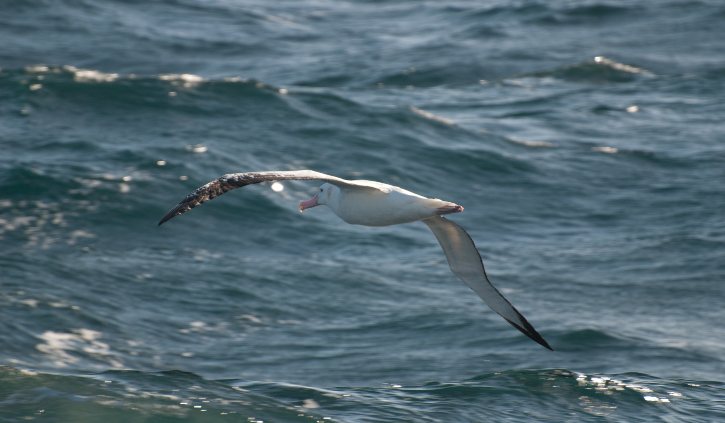
On the way to South Georgia, you cross the Antarctic Convergence. The temperature gradually cools, and nutritious water rises to the surface of the sea due to colliding water columns. This phenomenon sometimes attracts a multitude of seabirds near the ship, including several species of albatross, shearwaters, petrels, prions, and skuas.
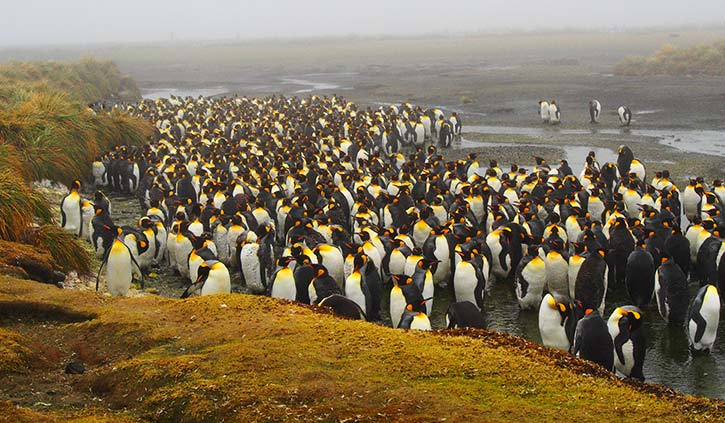
Today you arrive at the first South Georgia activity site. Please keep in mind that weather conditions in this area can be challenging, largely dictating the program.
You may visit the following sites over the next few days:
Fortuna Bay – Near beaches inhabited by various penguins and seals, you have the chance to follow the final leg of Shackleton’s route to the abandoned whaling village of Stromness. This path cuts across the mountain pass beyond Shackleton’s Waterfall, and as the terrain is partly swampy, be prepared to cross a few small streams.
Salisbury Plain, St. Andrews Bay, Gold Harbour – These sites not only house the three largest king penguin colonies in South Georgia, they’re also three of the world’s largest breeding beaches for southern elephant seals. Only during this time of year do they peak in their breeding cycle. Watch the four-ton bulls keep a constant vigil (and occasionally fight) over territories where dozens of females have just given birth or are about to deliver. You can also see a substantial number of Antarctic fur seals here during the breeding season (December – January).
Grytviken – In this abandoned whaling station, king penguins walk the streets and elephant seals lie around like they own the place – because they basically do. Here you might be able to see the South Georgia Museum as well as Shackleton’s grave.
Cooper Bay – A Zodiac cruise in Cooper Bay offers a great opportunity to see macaroni penguins below a large rookery. Numerous fur and elephant seals are found on the beach, while majestic light-mantled albatrosses can be seeing gracefully gliding above.
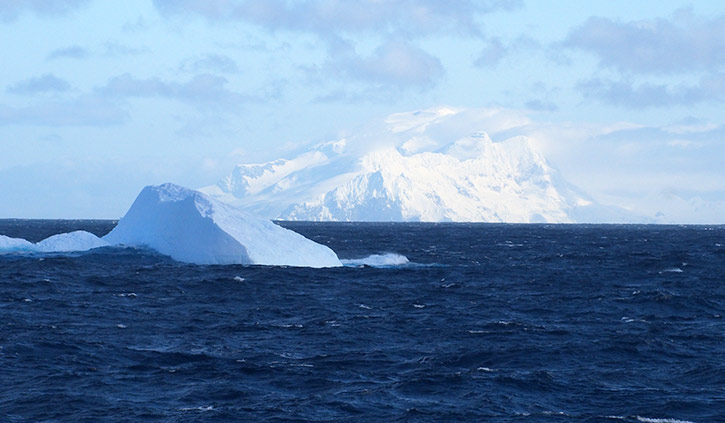
There may be sea ice on this route, and at the edge of the ice some south polar skuas and snow petrels could join the other seabirds trailing the vessel south.
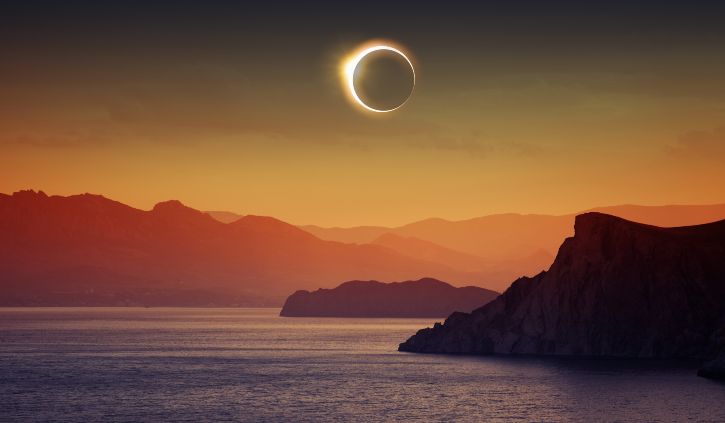
The ship positions itself in the center of the shadow of the moon, and if possible, some distance into the Scotia Sea drift ice. The ice edge will be about 60°S, 41°W.
Some coordinates for the path of the moon’s shadow:
7.06 UTC: 58.47.7 S – 42.45.2 W, 1.39 minutes, 8 degrees above horizon
7.08 UTC: 60.42.4 S – 40.59.8 W, 1.42 minutes, 9 degrees above horizon
7.10 UTC: 62.22.3 S – 39.48.0 W, 1.44 minutes, 11 degrees above horizon

Enormous icebergs and a fair chance of fin whale sightings ensure there’s never a dull moment on this last sea voyage south. Also, your best chance to spot Antarctic petrels is here.
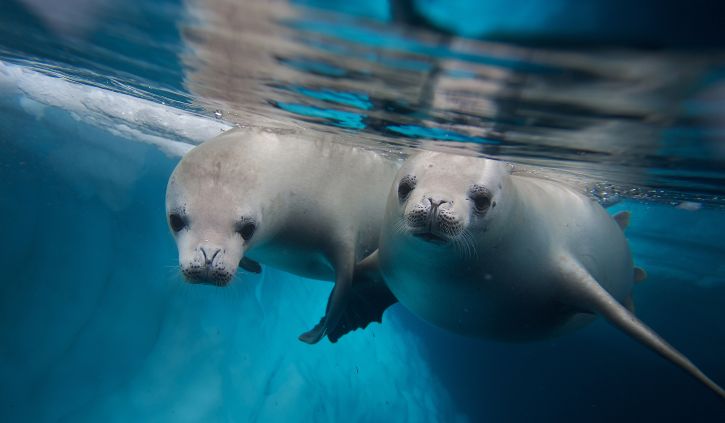
If the ice conditions permit, you now sail into the Weddell Sea. Here colossal tabular icebergs herald your arrival to the eastern side of the Antarctic Peninsula. Paulet Island, with its large population of Adélie penguins, is a possible stop. You might also visit Brown Bluff, located in the ice-clogged Antarctic Sound, where you could get the chance to set foot on the Antarctic Continent itself.
If conditions aren’t favorable to enter the Weddell Sea from the east, the ship will set course for Elephant Island and head into the Bransfield Strait, between South Shetland Island and the Antarctic Peninsula. Here you can attempt to access the Antarctic Sound from the northwest.
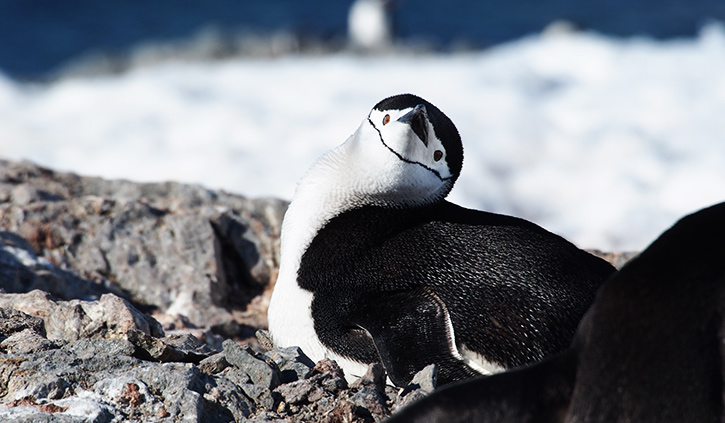
The volcanic islands of the South Shetlands are windswept and often cloaked in mist, but they nonetheless offer many subtle pleasures. A wide variety of flora (mosses, lichens, flowering grasses) and fauna (gentoo penguins, chinstrap penguins, southern giant petrels) live here.
On Deception Island, the ship plunges through Neptune’s Bellows and into the flooded caldera. If a landing here is possible, you will find hot springs, an abandoned whaling station, and thousands of cape petrels. A number of kelp gulls, brown skuas, south polar skuas, and Antarctic terns can be spotted here too.
Your last activities before venturing into the Drake Passage are likely to find you around the northern Gerlache Strait. One option is Cierva Cove and the rugged, ice-gripped mountains of the Davis Coast. Mikkelsen Harbour on the south coast of Trinity Island is another alternative. Here you may enjoy a gentoo penguin rookery as well as some fine scenic cruising.

Your return voyage is far from lonely. While crossing the Drake, you’re greeted by a vast array of seabirds. But they seem a little more familiar to you now, and you to them.
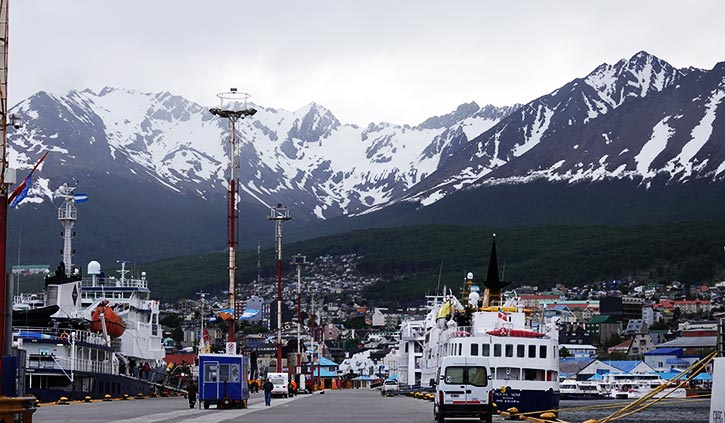
Every adventure, no matter how grand, must eventually come to an end. It’s now time to disembark in Ushuaia, but with memories that will accompany you wherever your next adventure lies.
To make the most of your time in South America we can tailor a holiday to Patagonia to suit your voyage dates. If you have a bit more time we can create a tailor-made itinerary to some of the highlights of South America. Take a look at the Patagonia sample itineraries below and contact us to begin creating your perfect holiday.
18 Days
4 Days
5 Days